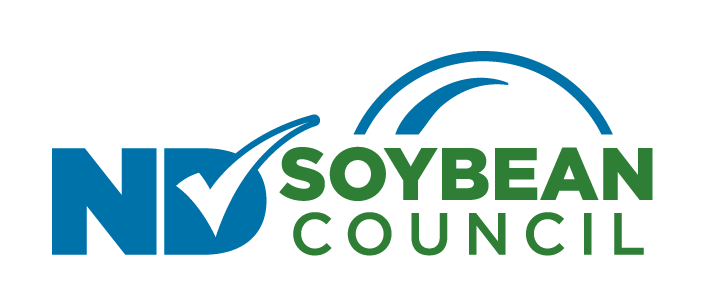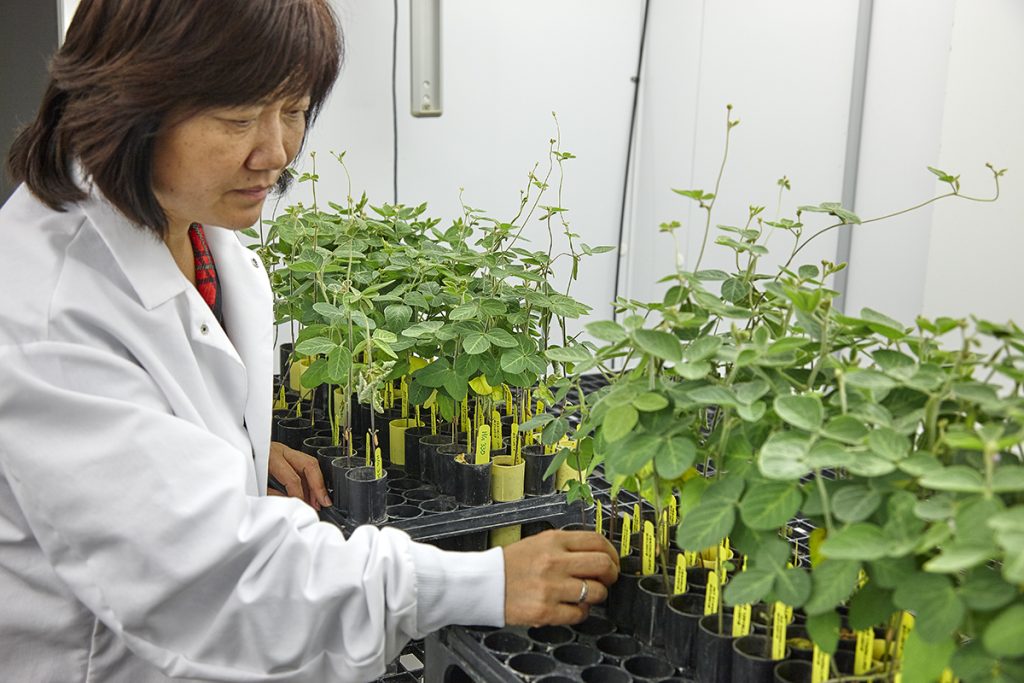Research Overview
Research has been one of the main priorities of the North Dakota Soybean Council (NDSC) since its establishment. On behalf of soybean farmers, the NDSC is committed to investing about 30-40 percent of the checkoff funds in research to address soybean production issues and advance the industry. NDSC also provides funding to communicate research results to farmers, agronomists, and crop consultants to bring value to North Dakota soybean farmers.
The NDSC’s research investment yields positive returns by helping farmers in the state better manage diseases, pests, and other production issues and improve soybean yields and profitability.
In North Dakota, soybean production acreage and productivity have steadily increased since the 1980s. Soybean production research is one of the main drivers that played a pivotal role in soybean expansion, sustainability, and yield improvements in our state. Breeding for early season, high-yielding varieties resistant to iron deficiency chlorosis, diseases, and soybean cyst nematode is an example of checkoff-funded research providing solutions for many complex soybean-production issues.
As part of the NDSC’s strategic plan, research has two strategic priorities:
- Production and Plant Breeding Research
- New Uses Research
- In Production and Plant Breeding Research, our primary goal is to help North Dakota soybean farmers achieve greater production efficiencies. Our strategic initiative for this goal involves investing in production practices and plant breeding to enhance the current and long-term success of North Dakota soybean farmers. We aim for North Dakota farmers to adopt checkoff-recommended advances in soybean production and plant breeding.
- We also invest in New Uses for North Dakota soybeans. Our goal with this strategic initiative is to help realize high-volume or high-value new uses for North Dakota soybeans.
Disseminating our funded research to farmers is a crucial part of NDSC’s mission. To learn more about the focus and outcomes of NDSC-supported soybean research, download the 2023 Research Update.
National Soybean Checkoff Research Database
The National Soybean Checkoff Research Database is a database that encompasses soybean research projects funded by the soybean checkoff to help all stakeholders find information about checkoff-funded research projects. This nationwide database is funded by the United Soybean Board and reflects projects starting in 2008 to date. The database includes research projects from supply and demand including Food, Feed, Fuel, Industrial, Sustainable Production, and Export/Trade research projects. You can search for information from all states or search by your state soybean organization for more information about each organization’s checkoff investments.
The NDSC-funded research projects are also available on this database. If you’re interested in learning about the NDSC-funded research projects, click here.
Soybean Research and Information Network
Soybean Research and Information Network (SRIN) is a joint effort of the North Central Soybean Research Program (NCSRP) and the United Soybean Board. SRIN is administered by the North Central Soybean Research Program (NCSRP) and is supported in part by the United Soybean Board and other state and regional soybean boards. SRIN highlights results, provides resources, and promotes the importance of soybean research.
The online resource contains checkoff-funded soybean production research findings with direct links to the perspective underlying scientific studies housed in the National Soybean Checkoff Research Database.
To learn more about SRIN, visit www.soybeanresearchinfo.com


